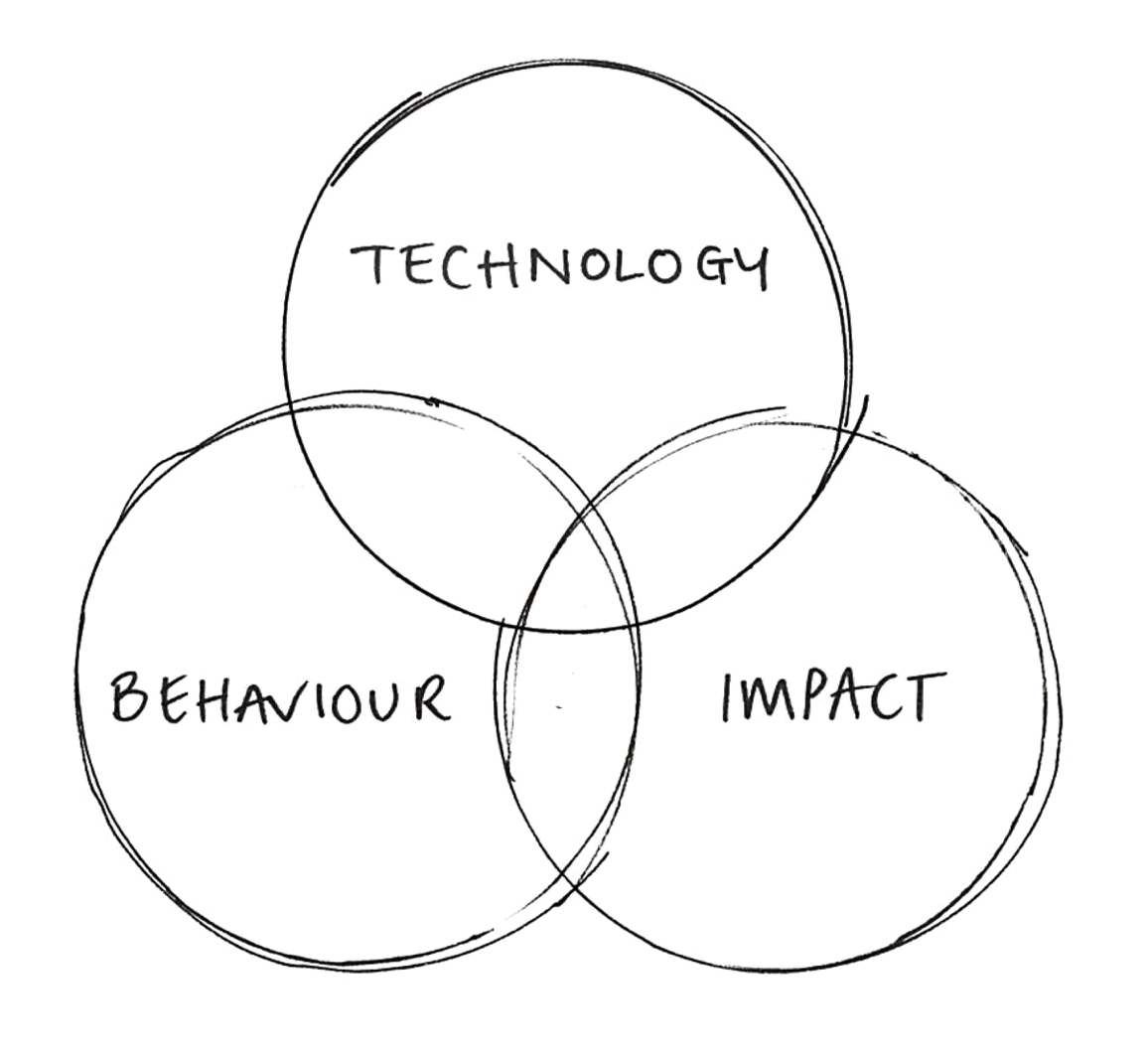Technology. What does technology enable?
Does the technology exist to do the thing we want to do? It’s possible to develop anything if you have the time and money, but building from the ground up is expensive and fraught with danger. Before we build anything we need to be sure there aren’t already platforms or products in existence which we can fuse together to deliver our idea. I honestly believe that the organisations that invest time and resources on establishing the most effective way of bringing together existing technologies will be at the forefront of redefining the fundraising model.
Behaviour: What are people actually doing?
This is important. An idea that is built around a fancy piece of technology that doesn’t have mass appeal or mass adoption won’t drive mass response. It is that simple. And a piece of technology that requires people to do something that sits outside of their existing behaviours has to deliver real value and meet an identified audience need if they are to consider using it. There are too many ‘cool’ ideas that end up being launched and then die quietly. To get traction, our ideas have to born out of and be built upon existing behaviour.
And while we are here. Not very many people want another login to another closed platform. We all have too many passwords to remember and the only people who will bother are your most engaged. Strive to personalise the experience of people supporting you, but don’t hide it away.
Impact. What will deliver the biggest impact?
I worry this question doesn’t get asked enough. Will this idea deliver impact at the level we want or need? And for clarity I mean impact as defined by you, so that’s money, actions, likes, shares, whatever it is you know you need to do. Will your idea deliver it?
So, by all means develop your Virtual Reality fused with Android Pay idea. But don’t be surprised if the millions of people who don’t use Android Pay don’t get involved.
What next?
It feels as if we are emerging from a period of time where we’ve been really focussed on what we want people to do for us — and defining supporters as what they do for us, rather than as people who share our values and who want to see the same change that we do.
If we accept that this is something that needs to change, future innovation starts with an absolute focus on what your organisation exists to do and the means by which we inspire people to join us on the journey to delivering on our mission.
Inspired by movements of the past (e.g the civil rights and peace movements) and big digital movements of recent history like Bernie Sanders’ presidential campaign, I’m putting a lot of focus into understanding how charities can apply the strategies and tactics from movement building into their public engagement strategies.
What makes a successful movement?
When we study the most successful movements they have these five things in common:
A vision to believe in
A believable plan to deliver that vision
Values that can be subscribed to
Useful (and valuable) things to do for those who participate
Charismatic leadership or leaders
Which are things charities should have in abundance. And to effectively apply the strategies and tactics of movement building, charities should consider the following key factors.
We are not at the centre of the movement
A single organisation shouldn’t and can’t be at the centre of the movement. We need to listen to those who share our values, study the movement they are already in and then work out how we can respectfully harness the power and energy of the existing movement and ensure we are giving something back.
For example I imagine Friends of the Earth are aware that they are not at the centre of the environmental movement. They are successful because they recognise that there is a wider alliance of organisations, (other NGOs, governments, legislators and companies) all working together to fulfil on the shared objective of saving the planet.
Values. Not products.
To build an engaged, committed crowd of like-minded individuals at scale, we need to move beyond supporter recruitment and start attracting support by promoting our values instead of focusing purely on fundraising products.
Engagement and community building rather than broadcast advertising.
Advertising isn’t dead, but it’s starting to lose its relevance with the public. It feels as if the areas we should be exploring are around how we can build measurable engagement and a sense of community around a problem, or create campaigns based on shared values.
Moving on from two stage and hand raising
If we can inspire people through our values, if we are harnessing the power and energy of the existing movement, we need to be giving those who join us a range of useful and valuable things to do. Otherwise we aren’t being authentic and all we’re doing is recruiting prospects for conversion to our products.
If we are honest with ourselves, we know that if we continue with the status quo, or to tweak our existing approach, it is highly unlikely we will be able to meet our organisation’s goals and deliver the change in the world we are here to create.
We all know we need to transform our fundraising model. The key question is how.
The charities that keep up with human behaviour, successfully innovate their methods of engaging the public at scale by putting their values front and centre as well as offering the very best experience will be the ones that succeed over the next 15 years.
Originally published here.
Header photo by Markus Spiske on Unsplash










